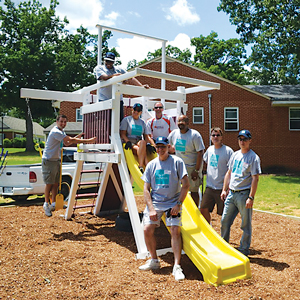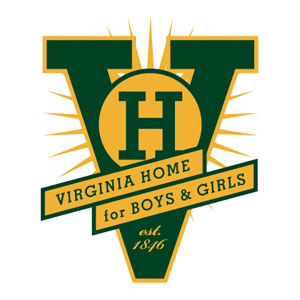 Tykara Evans was given up for adoption at four months old and spent most of her early years in the child welfare system.After unsuccessful foster care placements, 17-year-old Tykara was placed in a group home at Virginia Home for Boys and Girls (VHBG). It was the first place that felt like a real home to her.
Tykara Evans was given up for adoption at four months old and spent most of her early years in the child welfare system.After unsuccessful foster care placements, 17-year-old Tykara was placed in a group home at Virginia Home for Boys and Girls (VHBG). It was the first place that felt like a real home to her.
Tykara lived at VHBG for two years and attended the school on campus for one summer. “They work wonders there,” said Tykara, who is 26 now. “They helped me through some rough times in my life.”
Tykara is one of 20,000 youths who has lived at VHBG since 1846 – a place they felt safe, a place where they could connect with other youth with similar troubled backgrounds, a place they could call home.
VHBG serves Virginia youth whose social, emotional, or behavioral challenges – often the result of trauma, abuse, or neglect – require specialized care. The nonprofit currently assists about a hundred kids each year, ages eleven and up, in its campus-based group homes and alternative school, as well as community-based programs that support children and families in their homes.
The 44-acre campus on Broad Street, tucked away behind a car dealership, also has a fellowship hall, dining hall, soccer Field, tennis courts, gym, and pool.
“It’s a neighborhood for our kids. We create a safe, nurturing and loving environment for them,” said Claiborne Mason, president of VHBG.
A unique aspect of VHBG is its teaching family model, a specialized program to care for at-risk youth. A married couple in each group home serves as teaching-parents for up to eight children. They create a family-like setting to teach life lessons and independent living skills.
“The best part was how much my teaching-parents cared for me. We were a family. I still stay in touch with them today,” said Evans, who has fond memories of cooking lessons, movie nights, and scrapbooking.
The youth either attend Henrico County public schools or the on-campus John G. Wood School, an alternative school for middle and high school students.
This fall, VHBG will expand and open a new alternative elementary school to serve at-risk youth in grades K through five.
“We’re excited we have the opportunity to serve more children who are struggling to reach their full potential,” said Mason. “And the community support we’ve received for the new school has been tremendous.”
In May, VHBG hosted 125 volunteers from Altria to help prepare for the new School and transform its campus. In addition to human resources, Altria provided grant support of $39,000 for a playground, furniture, building renovations, and maintenance projects.
With its new elementary program, VHBG will serve younger children with behavioral challenges so they can succeed when they return to public school.
“We are committed to a strong parental education and training component to help kids in trouble and transition them back on the right path,” said Monica Manns, vice president of education at VHBG. Members of the school staff will meet frequently with the parents, and a VHBG case manager will visit the home to offer additional support.
“VHBG gave me a second chance. I am most proud of making it out in the real world,” said Tykara, who is taking health management classes. “My goal is to one day be a counselor to help other teens.I want to give back.”




